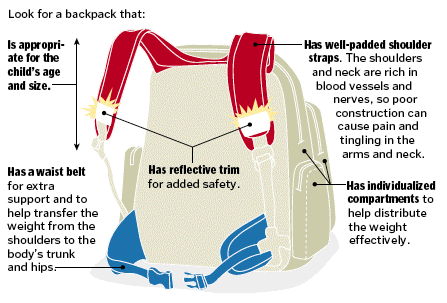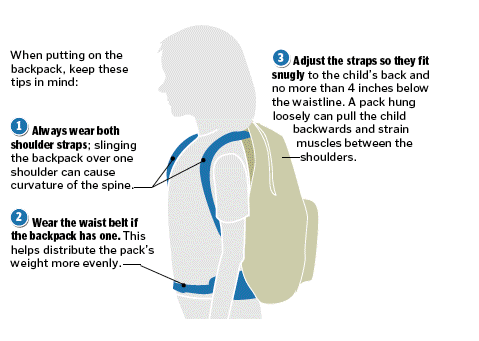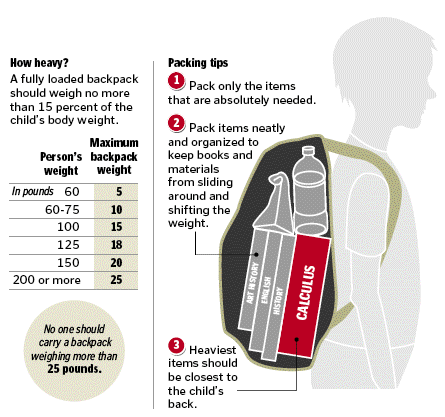Back pain can be a common ailment among adults but can also impact children and teens. One of the most common causes for back pain in children is backpacks that are overloaded or not worn correctly. Backpacks that are too heavy can cause a lot of problems for kids, like back, neck, and shoulder pain, as well as poor posture. More than 40 million students carry school backpacks, but according to the American Occupational Therapy Association (AOTA), many of them are too heavy, incorrectly worn or poorly designed. As students embark on a new school year, it is a good time to remember a few basic principles when it comes to backpacks.
Start With an Ergonomic Backpack
When selecting a backpack, look for:
- An appropriate size: A backpack should not be wider than your child's torso or hang more than 4 inches below the waist.
- Padded, adjustable shoulder straps to help distribute the weight on your child’s back without digging into their shoulders.
- Padded back to protect against contents inside the backpack poking into your child’s back.
- Waist and chest straps to help distribute the weight of the backpack more evenly across your child’s back.
- Multiple compartments to help position the weight more effectively.
- Compression straps to stabilize the contents.
- Reflective material to allow your child to be seen when walking to and from school.

Use the backpack correctly
Check the fit of the backpack:
- Make sure your child uses both straps when carrying the backpack; using one strap shifts the weight to one side and causes muscle pain and posture problems.
- Make certain the shoulder straps are tightened so the backpack is fitted to your child’s back; a dangling backpack can cause spinal misalignment and pain.
- Encourage your child to use the chest, waist, and compression straps, and to adjust them to the load.

Pack Smartly:
- A fully loaded backpack should weigh no more than 15% of the child’s bodyweight and no one should carry a backpack weighing more than 25 pounds.
- A roomy backpack may seem like a good idea, but the more space there is to fill, the more likely your child will fill it. Help your child determine what is necessary to carry. If it's not essential, have them leave it at home, in their locker or in the classroom.
- Teach your child to load the backpack with the heaviest items first closest to the bottom and the center of the back of the backpack and to make use of the multiple compartments to distribute the load.

At Mauser Packaging Solutions, we believe safety is personal – so personal that you bring it to work, and you take it home. We take precautions to protect our backs at work and we should take steps to protect the backs of our children by being cautious about their backpack use.

